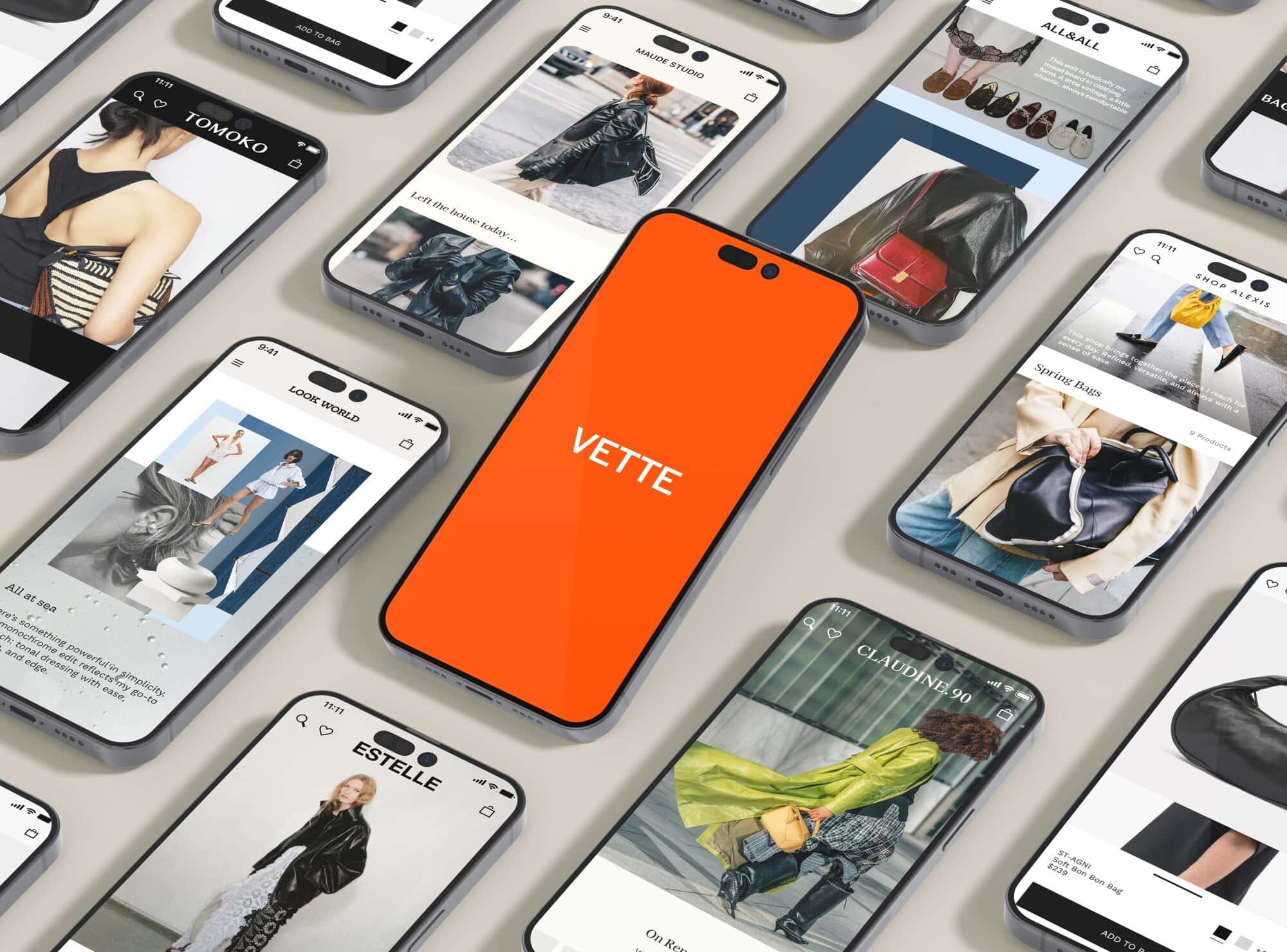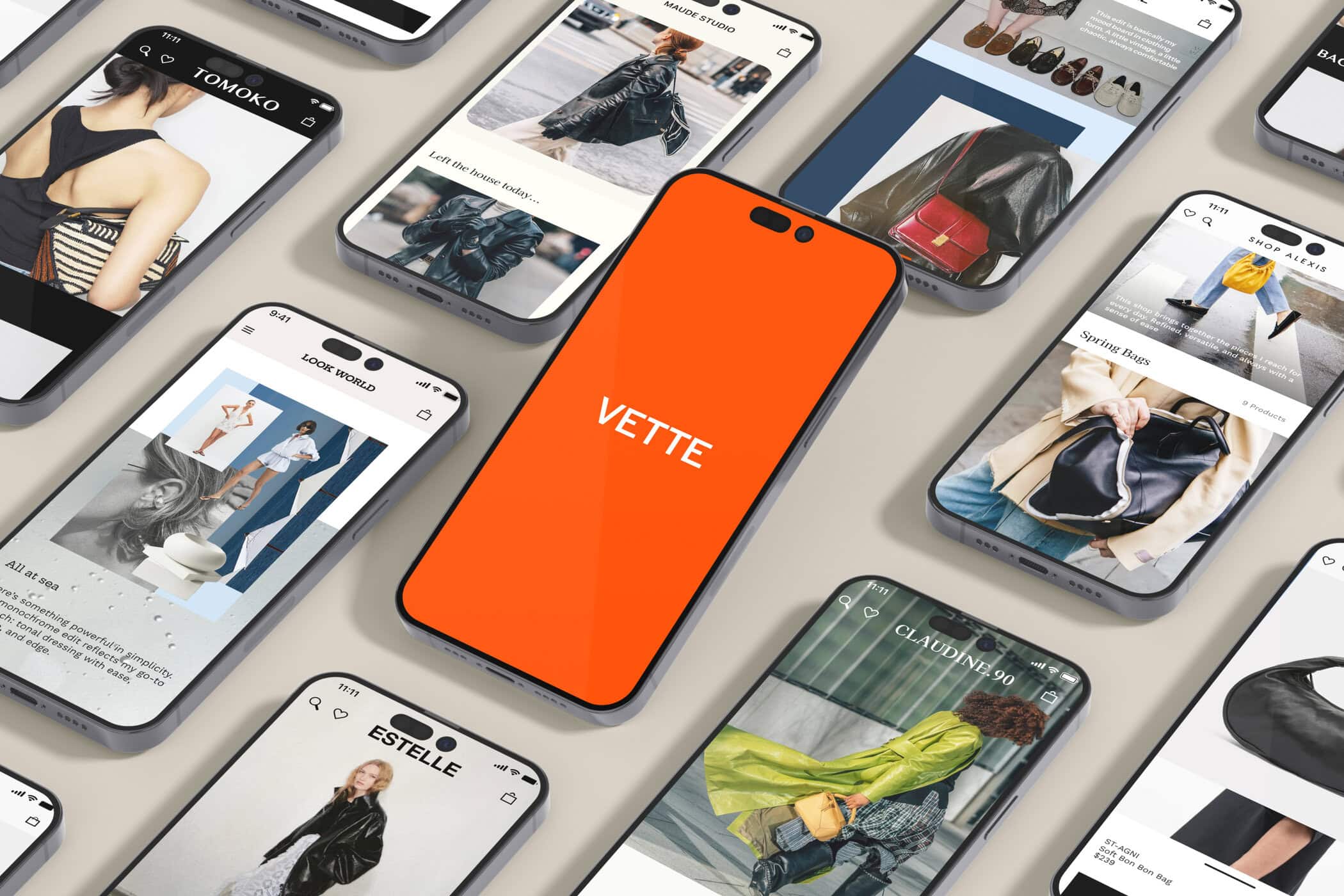Lisa Aiken And Condé Nast Introduce A Creator-Led Marketplace That Restores Curation, Rebuilds Trust, And Reimagines How Fashion Connects And Sells
By Kenneth Richard
Luxury, for all its strength, is still learning new tricks. Department and specialty stores have tightened their belts, online verticals are fighting for air, and the once-golden wholesale model feels a little tarnished. Yet the customer hasn’t gone anywhere — they’re online, scrolling, searching, and waiting for a reason to fall in love again.
Into this moment comes Vette, Condé Nast’s new commerce platform led by Lisa Aiken, Executive Fashion, Beauty & Lifestyle Director and SVP of Commerce — a woman whose career has spanned two decades in luxury e-commerce at Matchesfashion, Net-a-Porter, Mytheresa, and Moda Operandi.

I spent 20 years in the e-commerce space. And what I saw was that retail and shopping are ultimately relationship-based. The founding thesis of Vette is that people shop from people.
– Lisa Aiken
A Platform for the Personal
At its core, Vette is a new kind of infrastructure — an innovation designed to solve multiple challenges in fashion’s current ecosystem. It allows creators, stylists, editors, and tastemakers to operate independent, multi-brand storefronts stocked directly from participating labels. Unlike affiliate programs, the transactions happen on the creator’s own site; the brands fulfill the orders and retain the customer relationship.
“Think of it like Shopify, but for tastemakers,” Aiken explained. “Shoppers don’t go to vette.com — they go to the tastemakers destination. It is their domain, unique branding, curation and community. The creator curates from live inventory feeds provided directly by brands. The consumer shops that curated edit, checks out within that store, and the brands manage fulfillment and customer service.”

It’s a model built to bring clarity to complexity. For brands, it offers a lower-risk alternative to wholesale and a less costly complement to direct-to-consumer. For creators, it opens a new revenue stream with deeper ownership and transparency. And for consumers, it promises a return to a more human way of shopping — one guided by trust and taste rather than algorithms.
Curation as the New Luxury
“Everything in online commerce now is an endless aisle,” Aiken said. “There’s a lot of stuff. But what’s missing is curation — that feeling of walking into a specialty store where someone knows your taste.”
That idea, she insists, isn’t nostalgic; it’s necessary. A Roland Berger study found that 84% of fashion consumers prefer multi-brand shopping to mono-brand, yet the industry’s current structures — from vertically integrated retail to brand-owned e-commerce — have made that experience harder to find.
“Fashion in context is important,” she said. “Consumers want to see pieces alongside peers, discover new brands, and feel part of an edited environment that makes sense to them. That’s the healthy side of our industry, and it’s something the online experience has lost.”
A New Channel, Not Another Retailer
For brands, Vette represents what Aiken calls “an alternative distribution path.” In a climate where wholesale can feel risky and direct-to-consumer is increasingly expensive, she sees this as a third lane — one that restores control to the brand while expanding reach through trusted intermediaries.
“There are some brands that use wholesale more for marketing than sales,” Aiken said. “With Vette, we give them that multi-brand environment — curated by tastemakers — but with the mechanics and economics of a direct business.”
Unlike previous publishing experiments in commerce, Vette is not a shop disguised as editorial. It’s a white-labeled engine that powers the creators themselves, each with their own branding, audience, and digital storefront. “This isn’t about building another retailer,” Aiken said. “It’s about giving creators the tools to build their own.”

Condé Nast as a Catalyst
While Condé Nast is backing the project, Vette will live as its own brand. It’s being incubated as a startup within the publisher’s global structure, supported by the company’s existing relationships with brands, technology partners, and talent.
“I already think of commerce at Condé Nast as a startup within a 115-year-old company,” Aiken said. “Our commerce business is six years old. Vette is six months old. It’s a natural evolution.”
Earlier this year, Condé Nast also acquired the underlying marketplace technology to power Vette, giving the company the infrastructure to move quickly from concept to execution.
That evolution is underpinned by data. “Our shopping content, especially editor wish lists, performs incredibly well,” she said. “People respond to individual voices. They trust those voices. We wanted to see that extend into an actual shopping experience.”
The parallels to Substack aren’t lost on her: “If you think about Substack, you have individual voices and brands showing up there too. We see a similar opportunity — independent storefronts powered by credible curators, with technology and data capture that allow for direct audience communication outside of algorithms.”
From Editors to Entrepreneurs
Aiken uses the word creator broadly: “When I say creator, I mean industry voices — editors, stylists, personal shoppers, creative directors. These are people who already curate for their communities every day.”
“Creators are excellent curators for their communities,” Aiken said. “They’re the new specialty store owners — people whose taste carries weight, whose voice cuts through. They don’t just show product; they give it context.”
“What’s fascinating is how loyal these audiences are,” she added. “People want to shop from those they know and trust — it’s that simple. The future of e-commerce isn’t anonymous; it’s personal.”
“I think creators have built incredible communities but haven’t always had the infrastructure to turn that influence into business,” Aiken continued. “Vette gives them that — it’s about ownership, not just promotion.”
For now, the platform will launch with a small, invitation-only group of tastemakers, each supported by Vogue market editors and Condé Nast’s tech and creative teams to help design and brand their stores. “We’re treating each one like the opening of a specialty boutique,” Aiken said. “The creators bring the curation; we bring the tools.”
Technology Meets Taste
Behind the scenes, Vette leverages AI tooling to unify imagery and presentation across brands, ensuring a luxury-standard visual experience. “It’s one of those things that wouldn’t have been possible a few years ago,” Aiken noted. “The technology finally allows us to make this seamless, scalable, and beautiful.”
Financially, it operates on a standard revenue-share model between brand, creator, and platform, with no upfront costs to brands. “We’re making sure the economics are attractive and simple,” she said. “Ultimately, we’re trying to build the thing brands actually want — not another wholesale model, not another retailer. Something new.”
Rebuilding Trust Through Taste
If there’s one thread that runs through Aiken’s vision, it’s the restoration of trust — between brand and consumer, between commerce and creativity. “People don’t have time to scroll through 27 pages of red dresses,” she said. “They want to shop with someone who understands their taste.”
This is built around alignment: the creator wins, the brand wins, the consumer wins. And I think there are very few organizations that could actually bring all the necessary parts together — brand trust, creator trust, technology, and elevation.”
Redefining Fashion’s Commerce Future
For an industry searching for new ways to connect creativity and commerce, Vette lands as both a solution and a statement — proof that technology and taste can coexist beautifully. It’s a reminder that the future of shopping isn’t about replacing people with platforms, but empowering the right voices to guide them.
“I love this industry,” Aiken said. “And I wanted to build something that works for everyone — brands, creators, and consumers alike. A true win-win-win.”
Vette represents a new chapter in how fashion sells — one driven by personality, powered by technology, and guided by trust. It’s a platform that recognizes the industry’s greatest assets have always been its people and its brands: the editors, stylists, and creators whose taste shapes culture, and the houses whose craft defines it. In giving both sides new tools to connect and grow, Condé Nast and Lisa Aiken aren’t just creating a marketplace — they’re redefining what modern retail can feel like when creativity and commerce move together.
